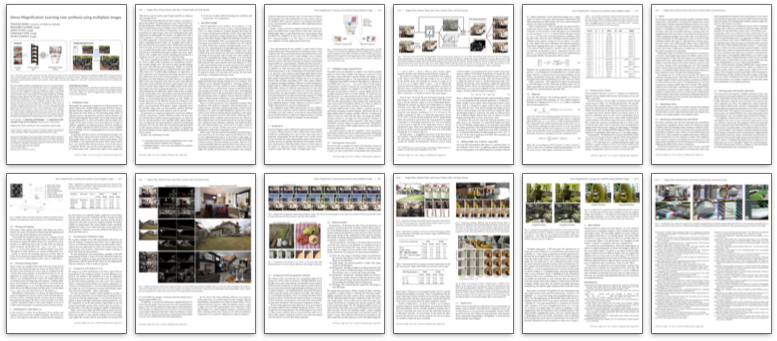Authors' Note
After the publication of this work, it came to the authors' attention that another earlier representation similar to the MPI was explored in Stereo Matching with Transparency and Matting, Richard Szeliski and Polina Golland, IJCV 1999. We encourage citing Szeliski & Golland as well if you find MPIs useful in your research.
Acknowledgements
We thank the anonymous reviewers for their valuable comments and Shubham Tulsiani for helpful discussions. This work was done while TZ was an intern at Google. This webpage template was borrowed from some colorful folks.
|


